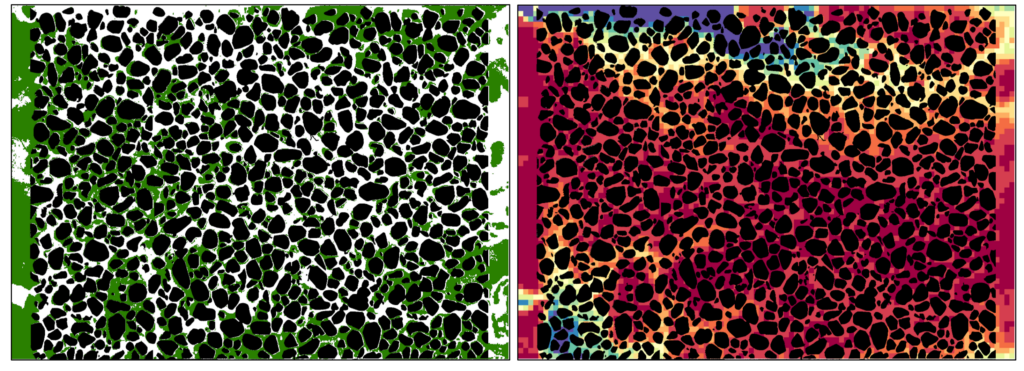We design and utilize novel microfluidic experiments to investigate the interplay between fluid flow, bacterial growth, and bacterially-mediated reactions in confinement. See below for a list of active projects.

Current projects
Riverbeds can emit a potent greenhouse gas, nitrous oxide, to the atmosphere, which traps outgoing solar radiation and leads to climate warming. The amount of nitrous oxide emitted from rivers is difficult to estimate due to a lack of knowledge of the conditions that favor its production. Nitrous oxide is produced in abundant but small zones where oxygen is not available. However, the size of these ?microzones? makes them extremely difficult to locate and measure. This project will investigate the formation of low oxygen microzones in controlled conditions that mimic river sediments. Experiments and numerical simulations will be used to determine how bacteria growing in the sediments regulate the formation of these microzones. Knowledge of how bacteria control the size, location, and duration of low oxygen microzones will provide key information needed to estimate river nitrous oxide emissions with greater certainty. This research will not only reveal the processes responsible for nitrous oxide emissions from riverbeds and inform the design of strategies that can reduce greenhouse gas emissions, but it will also improve understanding of how low oxygen microzones regulate contaminant transformation and nutrient cycling in groundwater. The research team will train future environmental engineers by mentoring trainees from diverse backgrounds at the postdoctoral, graduate, and undergraduate levels. Further, the team will lead activities to enhance public understanding of how shallow groundwater influences water quality in rivers, including a Groundwater Basics STEM summer program and field demonstrations for K-12 students and the public at a river restoration site.
The goal of this project is to determine how nitrous oxide production is linked to the dynamics of anoxic microzone formation in river sediments. The project team will perform sediment column experiments to quantify nitrous oxide production at the macroscale, perform microfluidic experiments to characterize the spatial and temporal occurrence of anoxic microzones at the pore scale, and use process-based numerical simulations to link the two scales. Through these efforts, the researchers will test the novel hypothesis that coupling between fluid flow and microbial biofilm growth determines the spatio-temporal dynamics of anoxic microzones, as well as the delivery of reactants that fuel the production of nitrous oxide within microzones. Research outcomes will provide a fundamental understanding of how microscale processes and biological activity influence macroscale behavior in porous media, with implications for solute transport, contaminant fate, and greenhouse gas fluxes.
Funding: We are grateful for support from the NSF Hydrologic Sciences Program.